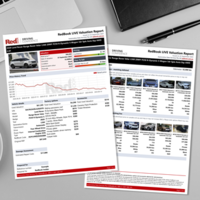The RedBook Insider: Fuel Type Retained Values
At RedBook, we’ve been tracking fuel type retained value performance for many years now. For much of this time, as depicted in the graph, the rankings have been consistent, with the stability of Internal Combustion Engine (ICE) powered vehicles standing out over other powertrains, though they have been closely shadowed by Hybrid Electric Vehicles (HEV) since mid-2022.
Over the past couple of years, we've observed an influx of HEV, Plug-In Hybrid Electric Vehicles (PHEV), and Battery Electric Vehicle (BEV) models into the Australian market. Despite the growing availability of these alternative energy powertrains, their retained value performance has not necessarily aligned with expectations. ICE and HEV vehicles continue to show relatively stable depreciation. PHEVs, though initially weaker, have tempered their rate of decline, while BEVs have seen a pronounced drop in retained value, especially since late 2022, reflecting market volatility and consumer uncertainty about their long-term value.

Why have BEV retained values dropped faster than other new energy vehicles, particularly since late 2022, as seen in the graph?
The sharp decline in BEV retained values can largely be attributed to increased competitive pressure in the new car market. An influx of more advanced, competitively priced alternatives, particularly from emerging Chinese brands, has offered consumers a wider range of options. Established brands, like Tesla, have responded to this disruption with aggressive pricing strategies, including significant price cuts, to defend their market share. The graph reflects how this intensified competition caused BEV values to plummet, especially from 2023, when these factors became more pronounced.
Another noteworthy finding is how PHEVs, once considered the weakest powertrain option, have remained relatively stable amidst the recent sharp decline in BEV values. As the graph shows, PHEVs now hold a higher retained value than BEVs, suggesting that, despite their limited availability locally, their dual-fuel capability may be appealing to consumers as a more stable option during this transitional period in the market.
As the EV and PHEV used vehicle markets remain immature, it's possible the current trend could reverse in the coming years. Improvements in battery technology, infrastructure expansion, and rising consumer confidence could help EVs regain ground. However, as the sharp decline in BEV retained values over the past year suggests, any significant recovery may be a longer-term prospect.
Recent Posts
-
 The RedBook Insider: Emerging Divergence in the Popular 4x4 Ute Segment: Heavy-Duty Performance vs Hybrid-Electric Innovation30th September 2025
The RedBook Insider: Emerging Divergence in the Popular 4x4 Ute Segment: Heavy-Duty Performance vs Hybrid-Electric Innovation30th September 2025 -
 The RedBook Insider: Introducing RedBook LIVE: Smarter, Faster, and More Accurate Automotive Intelligence30th September 2025
The RedBook Insider: Introducing RedBook LIVE: Smarter, Faster, and More Accurate Automotive Intelligence30th September 2025 -
 The RedBook Insider: Introducing the RedBook Insider Webinar Series30th September 2025
The RedBook Insider: Introducing the RedBook Insider Webinar Series30th September 2025
